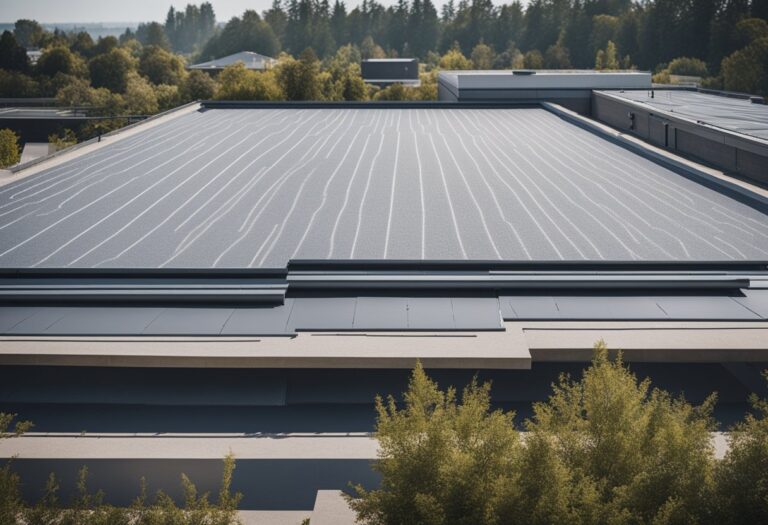Beauty and Function: The Art of Architectural Roofing

Architectural roofing is an essential element of any building. It not only provides protection from the elements but also adds to the aesthetic appeal of the structure. The art of architectural roofing involves designing and constructing roofs that are not only functional but also visually appealing. Architects and builders have been using various roofing materials and designs to create beautiful and functional roofs for centuries.
Architectural roofing has come a long way from the traditional thatched roofs of ancient times. Today, there are countless roofing materials and designs available to architects and builders. From asphalt shingles to metal roofing, each material has its unique benefits and drawbacks. The choice of roofing material and design depends on various factors such as the climate, budget, and the desired aesthetic appeal. This article explores the art of architectural roofing, highlighting the different materials and designs available and how they can be used to create beautiful and functional roofs.
Essentials of Architectural Roofing

Historical Evolution of Roofing
Roofing has been an essential part of architectural design for centuries. The earliest known roofing materials were thatch, straw, and mud. As civilizations advanced, so did roofing materials. The ancient Greeks used terracotta tiles, while the Romans used lead and copper. In the Middle Ages, slate and wood shingles became popular in Europe.
Materials and Durability
Today, there are a variety of materials used in architectural roofing, each with its own benefits and drawbacks. Asphalt shingles are the most popular roofing material in the United States due to their affordability and durability. Metal roofing is also gaining popularity due to its longevity and energy efficiency. Tile and slate roofing are known for their beauty and durability, but can be expensive to install and repair.
When choosing a roofing material, it is important to consider factors such as climate, budget, and desired aesthetic. Proper installation and maintenance can also greatly increase the longevity of a roof.
Design Principles
Architectural roofing not only serves a functional purpose but also contributes to the overall design aesthetic of a building. The shape, color, and texture of a roof can greatly impact the visual appeal of a structure.
Design principles such as proportion, balance, and symmetry are important considerations when designing a roof. The roof should also complement the overall style and architecture of the building.
In addition, practical considerations such as drainage and ventilation must be taken into account in the design process. Properly designed and installed roofing can enhance the beauty and functionality of a building for years to come.
Integration of Beauty and Function

Architectural roofing is an art form that requires the integration of beauty and function. A well-designed roof not only enhances the aesthetic appeal of a building but also provides structural integrity and protection from the elements. This section will explore the various aspects of integrating beauty and function in architectural roofing.
Aesthetic Considerations
Aesthetic considerations are an essential aspect of architectural roofing. The design of a roof should complement the overall style of the building and its surroundings. The color, texture, and shape of the roofing material should be carefully chosen to create a visually appealing roof that blends seamlessly with the building’s architecture.
In addition to the roofing material, other aesthetic considerations include the use of decorative elements such as dormers, cupolas, and chimneys. These elements can add visual interest and character to a roof while also serving functional purposes such as ventilation and natural lighting.
Structural Integrity
Structural integrity is crucial for any roofing system. A well-designed roof should be able to withstand the elements and provide long-lasting protection for the building. The roofing material should be selected based on its durability, resistance to weathering, and ability to withstand wind, rain, and snow.
The design of the roof should also take into account the building’s location and climate. For example, a flat roof may not be suitable for areas with heavy snowfall, while a sloped roof may be necessary to prevent water damage in areas with heavy rainfall.
Innovative Roofing Solutions
Innovative roofing solutions are constantly being developed to meet the demands of modern architecture. New materials such as metal, polymer, and composite roofing are becoming increasingly popular due to their durability, versatility, and aesthetic appeal.
In addition to new materials, innovative roofing solutions also include the use of green roofs, solar panels, and other sustainable technologies. These solutions not only enhance the aesthetic appeal of a roof but also provide environmental benefits such as energy efficiency and reduced carbon emissions.
In conclusion, the integration of beauty and function is essential for any architectural roofing system. A well-designed roof should not only enhance the visual appeal of a building but also provide structural integrity and protection from the elements. By considering aesthetic considerations, structural integrity, and innovative roofing solutions, architects and designers can create roofs that are both beautiful and functional.






